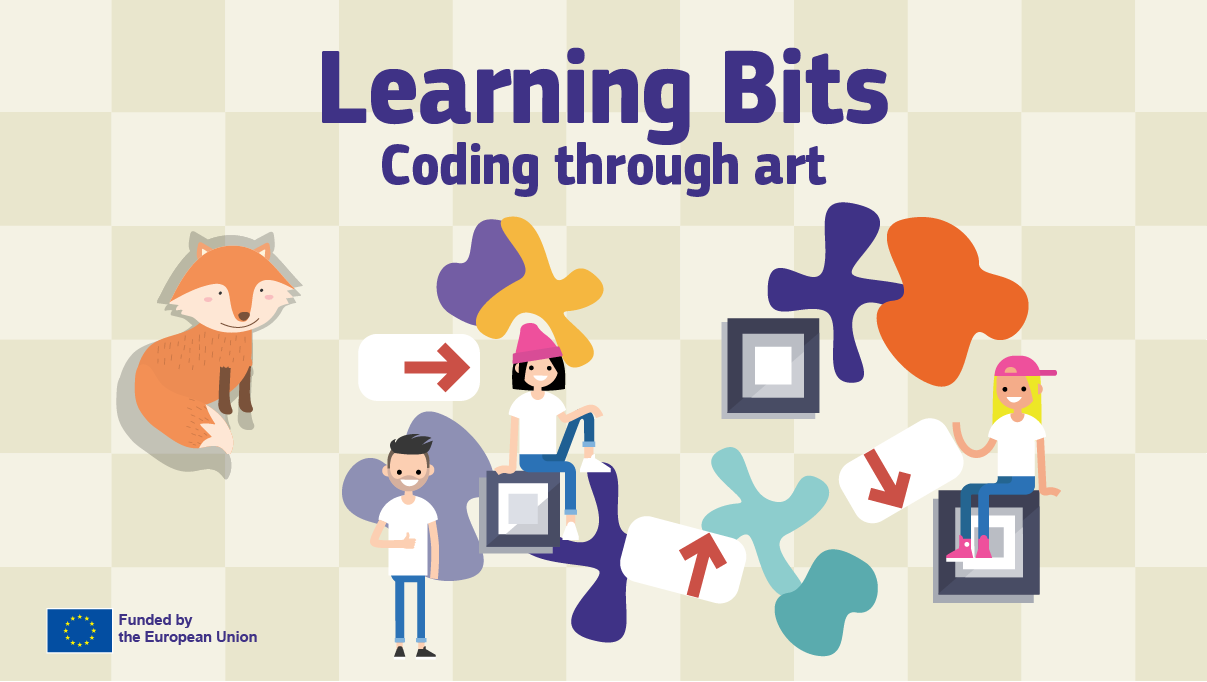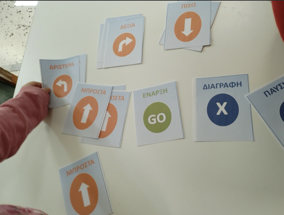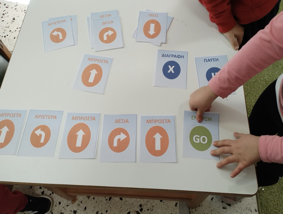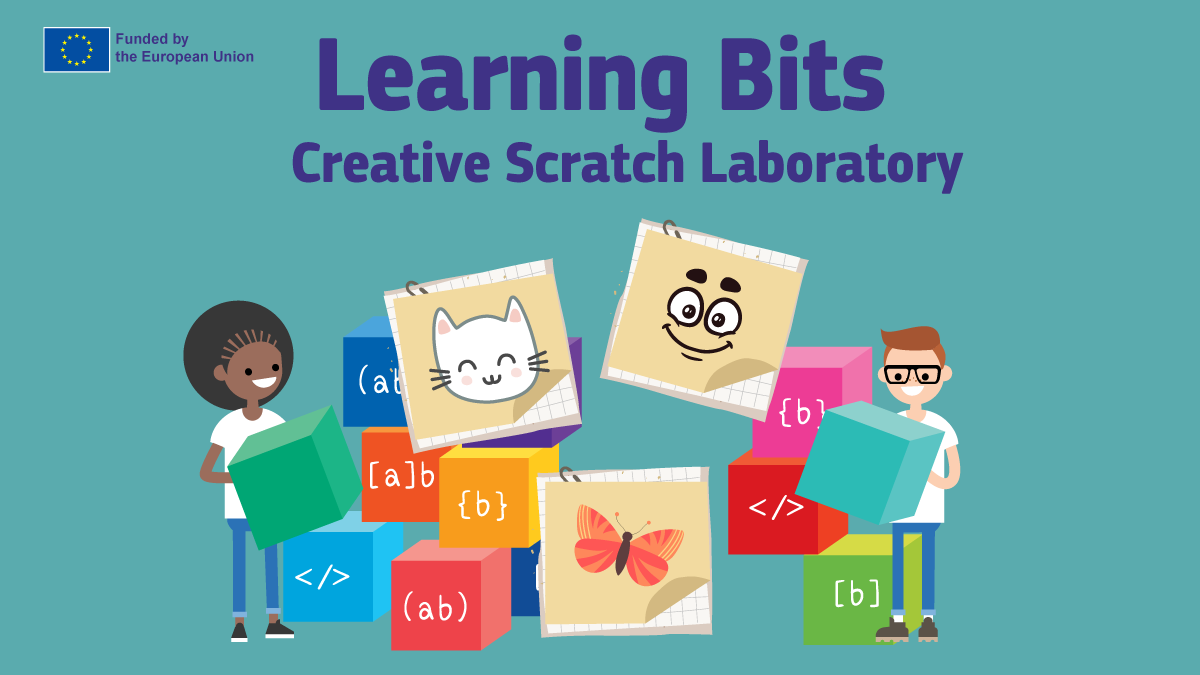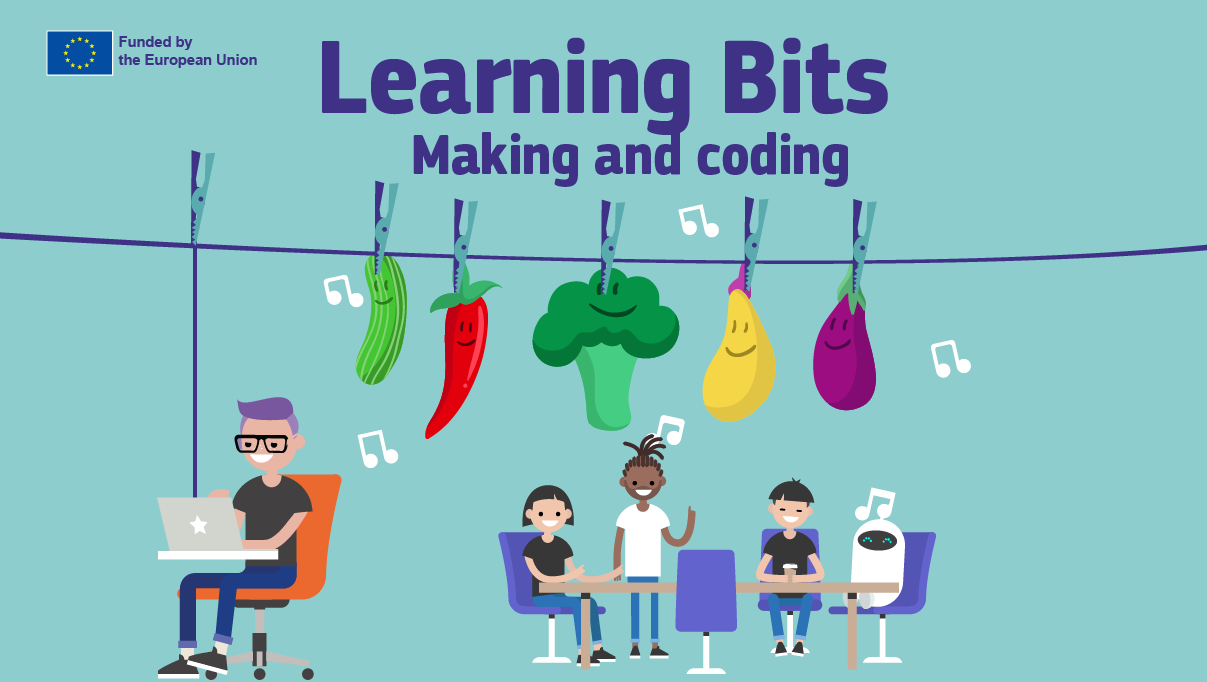Introducing “Code Through Art”: A New EU Code Week Learning Bit
Publication date: May 31, 2024
We are thrilled to announce the launch of a new Learning Bit, “Code Through Art,” designed for our youngest learners. This innovative resource brings together the worlds of coding and art to cultivate creativity, collaboration, and problem-solving in children aged 4-6. With three engaging lesson plans, this Learning Bit provides a rich, hands-on learning experience that blends the fundamentals of programming with artistic expression.
Lesson Plan 1:
Artful Coding
“Artful Coding” is a 45-minute activity tailored for kindergarten students aged 4-6 years. The lesson aims to introduce basic coding concepts through unplugged activities, allowing children to explore the intersection of coding principles and artistic expression. By using basic programming commands like forward, backward, left, and right, students can develop essential skills in a playful and engaging environment.
Students work collaboratively with classmates to design algorithms that navigate through the grid. They use coding direction cards to give instructions and guide their peers, simulating the operation of a programme to ensure it functions correctly. This activity helps develop problem-solving skills, enhance verbal communication, and promote teamwork.
At the start of the lesson, teachers engage students by asking what comes to mind when they hear the word “art.” Discussions about their creations, favourite colours, and knowledge of famous painters set the stage. Using resources like Europeana or Google Arts and Culture, students observe and discuss selected paintings. The story of Foxie the painter, whose gallery has been disrupted by a mysterious person, adds an element of intrigue. Students help Foxie by programming a “robot” (a student) to find and retrieve shuffled paintings on a grid, fostering problem-solving, algorithm design, and collaborative play.
Lesson Plan 2:
Creative Code Lab
“Creative Code Lab” extends over 90 minutes and continues to cater to 4-6-year-old kindergarten students. This lesson encourages individuality and artistic expression through programming. Students enhance their observational and interpretive skills while engaging in collaborative and communicative activities.
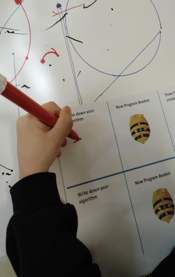
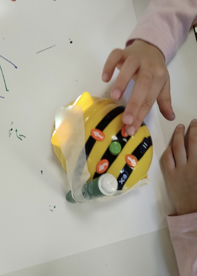

Teachers provide clear explanations of the activity’s goals and familiarise students with basic programming commands such as forward, backward, left, right, delete, go, pause, and movement commands. Students then approach the process of creating art with imagination and creativity, using a programmable floor robot, Bee-Bot, to draw shapes and lines for their artwork.
Students have the resources and time to explore Bee-Bot, navigating it with coding direction cards. This hands-on approach helps enhance sequential thinking and problem-solving skills. By creating artworks with Bee-Bot, students learn to design simple algorithms with sequences and iterations to solve problems.
At the beginning of the lesson, teachers present artworks made with shapes and lines, showcasing famous painters like Paul Klee, Wassily Kandinsky, Henri Matisse, Pablo Picasso, Piet Mondrian, and Joan Miró. Students spend time observing these paintings, noting elements such as shapes, lines, and patterns. Questions about their observations encourage critical thinking and detailed exploration. The story continues with Foxie the painter asking for Bee-Bot and the students’ help to create a new artwork, combining coding and artistic creativity.
Lesson Plan 3:
Touch Canvas: Creating Interactive Paintings
“Touch Canvas: Creating Interactive Paintings” is an advanced 90-minute lesson designed for 4-6-year-old students. This lesson integrates coding principles with artistic expression, fostering collaboration, problem-solving, and the creation of tangible interfaces.
Teachers guide students in using the Makey Makey invention kit, demonstrating how to create basic circuits and encouraging collaboration. Students research and design an interactive artwork, learning about user interface design and building conductive touchpoints. By connecting wires, clips, and other components, students enhance their fine motor skills and creativity.
During the activity, students create an interactive painting using the Makey Makey kit, where different parts of the painting correspond to various sounds or music when touched.
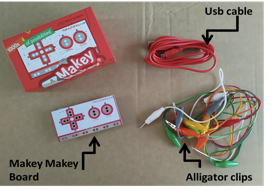

Inspired by Wassily Kandinsky’s idea that shapes and colours in paintings express the way music makes him feel, students observe his work and experiment with sounds. They then create their own painting using recycled materials, drawing, cutting, and colouring shapes and lines.
Students collaboratively decide which parts of the painting will be interactive, attaching conductive materials to these areas. They connect the Makey Makey kit to a computer and select sounds for the interactive parts of the painting. By testing their interactive painting, students understand cause-and-effect relationships, experimenting with different inputs and observing corresponding outputs. This activity encourages curiosity, inquiry, and creative exploration.
Maria Tsapara, the Learning Bit organiser and an EU Code Week Leading Teacher from Greece, highlights the importance of integrating art and coding in early childhood education. “Children are growing up in a complex world that is constantly developing technologically, which requires innovative educational approaches for early childhood educators. These approaches include activities that promote computational thinking and programming from a young age. Research suggests that targeted activities can effectively develop children’s computational thinking and problem-solving skills and at the same time foster their creative expression through technology,” she explains.
The “Code Through Art” Learning Bit, with its three comprehensive lesson plans, offers early childhood educators a valuable resource to foster creativity, collaboration, and problem-solving in young learners. By integrating art and coding, this Learning Bit encourages students to express themselves creatively, fostering their imagination and 21st-century skills. As Pablo Picasso famously said, “Every child is an artist. The problem is how to remain an artist once he grows up.” This Learning Bit aims to help educators inspire their students to remain artists as they grow, blending creativity and technology in a meaningful way.
Learn more about the EU Code Week free training materials and online courses here: EU Code Week Trainings
